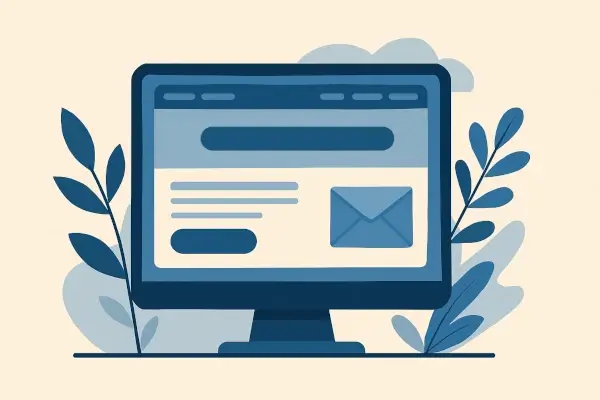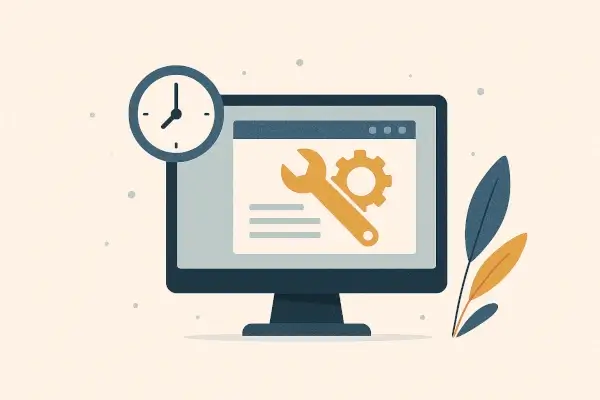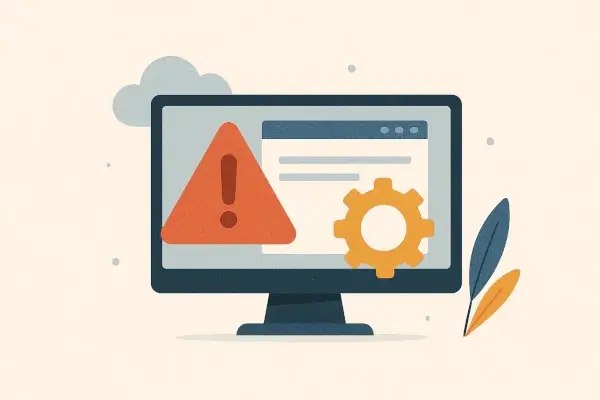
You know how important ensuring your business's round-the-clock availability is, especially if you operate across different time zones. With online businesses, marketing and sales never stop, catering to consumers 24/7 through chatbots, AI assistants, and server redundancy.
Table of Contents:
Why Emails Are Your Best Informational Channel
How Critical Is It to Send Website Downtime Emails?
Email Notifications for Scheduled Website Maintenance
Email Notifications for Sudden Website Maintenance
Should You Send Downtime Alerts if Only a Part of Your Website Is Down?
How Can 99.999% Website Uptime Help Grow Your Business
Businesses go the extra mile to ensure they are always available across time zones and continents. When it's not impossible, they preemptively inform their customers about upcoming maintenance or sudden outages.
On this note, mass email campaigns may be your best tool to warn your subscribers about scheduled overhauls or unexpected issues on time, keeping them updated and preserving their trust and lifetime value.
Read on to learn more about website downtime and how timely emails can help in this regard.
Why Emails Are Your Best Informational Channel

First of all, I'm not saying you should necessarily use email to warn your customers. If you have more reliable communication channels – for example, SMS messages – you can use them standalone or, even better, in addition to emails.
Overall, the more customers are on your email list and the higher your email deliverability — the percentage of your emails that reach the inbox rather than being sent to the spam folder — the better emails should work as an informational medium. With tools like email round-trip monitoring, you can ensure 99% email deliverability, thereby improving the effectiveness of your website downtime email campaigns.
How Critical Is It to Send Website Downtime Emails?

For some businesses, informing customers about on-site problems and, even more so, impending downtime is crucial. Imagine a stock or cryptocurrency exchange going offline at the peak of a bull market – even a single hour of downtime can result in millions of dollars in losses and significant reputational damage. In finance, healthcare, insurance, and other critical industries, you cannot afford to stay offline, let alone go offline out of the blue without warning your customers.
On average, however, around one-third of all outages prove to be significant (17%), serious (6%), or severe (4%), with 32% having almost no effect on business and 41% being negligible. However, with 27% of users experiencing significant negative consequences due to website downtime, it's essential to have effective prevention and informative strategies in place.
But then again, numbers can sometimes be misleading. For example, you might assume that 99% of downtime is quite good, but this equals over 3.5 days of downtime during a year (read: thousands of dollars lost). Uptime issues may be especially critical if they occur during busy days like Black Friday, Christmas, or even during December, when many companies finalize their budgets, potentially leading to expenditures on new software.
Email Notifications for Scheduled Website Maintenance

Without a doubt, the most popular case is scheduled website maintenance. Every business, even banks, needs maintenance from time to time, so informing customers beforehand about scheduled maintenance is a risk-free and necessary measure.
Here are the two ways to send maintenance notifications by email:
Use an Email Marketing Platform
If you're already using marketing software like MailChimp or a CRM or lead management system that also covers email marketing – for example, HubSpot or Phonexa – you can use it to create a segmented email list for sending website downtime notifications.
I recommend sending downtime notifications to everyone on your list, including inactive subscribers, to minimize risks. Imagine if your long-idle customer returns to your website to place an order or checks how things are and discovers that the website is down. There's a good chance they never return, so it's better to be safe than sorry.
Tools like ZoomInfo can help businesses keep their email lists up to date, ensuring downtime alerts reach the right contacts.
Set a Triggered Email Campaign
As an alternative to using a dedicated email marketing platform, you can set up a triggered email campaign so the website downtime emails are sent automatically once your website or a landing page goes down. In practice, this means writing a Python, PHP, or Node.js script that executes an email campaign once your website is down.
The best thing is that you don't need to be a programmer – you can use any generative AI to write the script. Then, you can upload it to your web hosting server and even run it manually to test whether it works. Moreover, if the script doesn't work, you can ask your generative AI to correct it repeatedly until it works.
Here's an example of a Python script generated by ChatGPT:
import smtplib
from email.mime.text import MIMEText
# Email details
SMTP_SERVER = "smtp.gmail.com"
SMTP_PORT = 587
USERNAME = "your-email@gmail.com"
PASSWORD = "your-password"
def send_email(to_email, subject, message):
msg = MIMEText(message)
msg["Subject"] = subject
msg["From"] = USERNAME
msg["To"] = to_email
with smtplib.SMTP(SMTP_SERVER, SMTP_PORT) as server:
server.starttls() # Secure the connection
server.login(USERNAME, PASSWORD) # Login to email
server.sendmail(USERNAME, to_email, msg.as_string()) # Send email
# Example Usage
send_email("customer@example.com", "Website Maintenance Alert",
"Our site will be down from 2 AM - 4 AM.")However, when the outage is sudden, neither of these methods might be fast or effective enough. For example, the script might not work if your website is entirely down – if the server is also down, the script won't work.
Example of an Email Notification for a Scheduled Website Maintenance
Subject: Scheduled Maintenance Alert
Dear User,
We want to inform you that our website [website] will be undergoing scheduled maintenance to improve our services and ensure a better experience for you
Maintenance Schedule: [Start Time] – [End Time], [Time Zone]
During this time, our website and services may be temporarily unavailable. We apologize for any inconvenience and appreciate your patience.
Email Notifications for Sudden Website Maintenance

One of the best website downtime notification options is using a backend server and email API, simply because you don't have to rely on your own server. Since email APIs run on external servers – I'm talking about Mailgun, SendGrid, AWS SES, etc. – they can still operate if your server is down.
Here's an example of how it works:
- Both your website and your server crashed.
- Your Python script (located on a separate server*) sends an email via an email API.
- Use a scheduler to run the script automatically (for example, every 5 minutes) to check the website status.
The easiest solution, though, would be to use a server uptime monitoring service to check your website status every other minute and send an API request to your email API when the website goes offline. This will trigger your notification emails.
*Having a dedicated server is a great business decision. This way, among many other benefits, you can ensure that you will not become a victim of someone else wreaking havoc on your server. Most dedicated server providers guarantee a minimum uptime of 99.99%.
Example of an Email Notification for a Sudden Website Outage
Subject: Temporary Website Outage Notification
Dear User,
We want to inform you that our website [website] is currently experiencing an unexpected outage. Our team is actively working to resolve the issue as quickly as possible.
Should You Send Downtime Alerts if Only a Part of Your Website Is Down?
There are no technical differences in sending downtime emails when only some pages go offline, but you should figure out to whom you want to send these notifications. For example, if only one specific landing page is offline, it would be unreasonable and annoying to bother everyone on your list. In this case, it might be best to inform users involved in a campaign relevant to the landing page in question, or those likely to engage with it during downtime.
How Can 99.999% Website Uptime Help Grow Your Business?

It goes without saying that minimizing your website downtime is crucial, especially if you experience significant issues. Remember the February 2025 PlayStation Network outage, which lasted over 24 hours?
Not only were frustrated PlayStation users—the outage happened on the weekend, no less—bothered that they could not play their games, but they also recalled the 2011 PlayStation outage, which lasted 23 days. This is how badly things can escalate.
Here's how you can convert 99.999% of website uptime into profits:
- Uninterrupted Marketing & Sales — Minimizing website downtime and utilizing AI agents can ensure the uninterrupted operation of your business, allowing customers from any time zone to receive high-quality service or place an order instantly.
- Strong Brand Reputation — In industries such as SaaS, healthcare, or finance, achieving 99.999% uptime can be your unique selling point – especially if your competitors have a history of website outages.
- Higher Search Rankings — A 99.999% uptime sends a strong positive signal to search engines, which helps boost your position in search engine results pages (SERPs) and increase organic traffic. Likewise, 100% uptime ensures that crawlers can access your website without any issues.
Last but not least, a 99.999% website uptime means your website is quite secure, whereas a 100% uptime proves your security is almost impregnable. For some businesses, it may not mean much; for others, it may mean the difference between attracting the necessary investments and failing to do so.
Overall, though, I recommend achieving 99.999%, if not 100%, website uptime to ensure your business is available when your customers need it. This way, you eliminate all associated risks – with 100% uptime, mathematically – and gain the peace of mind you deserve.


 Copyright 2000-2025, WebSitePulse. All rights reserved.
Copyright 2000-2025, WebSitePulse. All rights reserved.